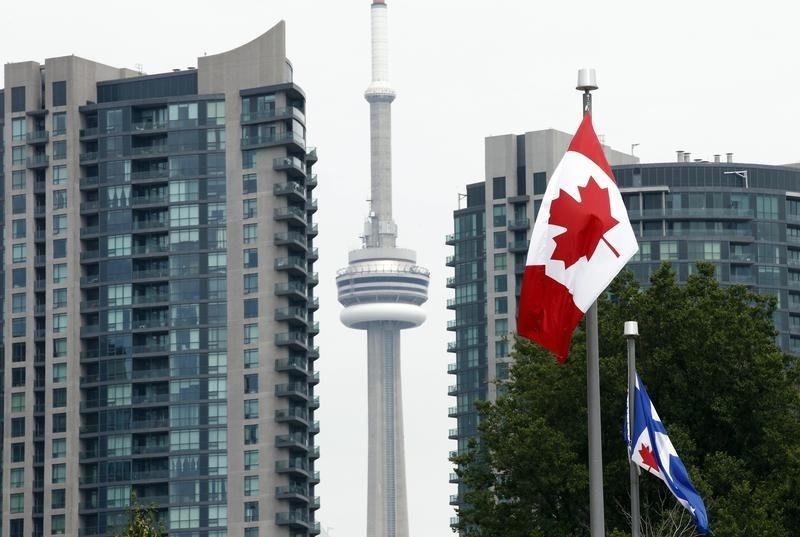Over the past few years, affordability has been noticeably on the decline. Everything from grocery bills to rent and mortgage payments has seen a hike, meaning families need to earn more to be able to keep up with basic living costs. While housing remains one of the most expensive essential living costs, the prices of other goods and services have also experienced significant increases. So how has this impacted the real estate market?
This content was originally published on Zoocasa. View original content and infographics here.
To see how the cost of living has risen in comparison to real estate prices, Zoocasa analyzed market basket measure (MBM) and benchmark home price data for 15 cities across Canada and compared these to their values five years ago. Market Basket Measure data was sourced from Statistics Canada and uses the most recently available data from 2022. Benchmark home prices were sourced from the Canadian Real Estate Association (CREA) and are from January 2024.
Home Prices Rising Faster Than the Cost of Living in 13 Canadian Cities
Though the cost of living is undoubtedly going up, in the majority of cities we analyzed it still lags behind home price surges. In 13 out of 15 cities, home price increases outpaced increases to the market basket measure. A city’s market basket measure (MBM) defines the amount a family of four would need to have in disposable income to enjoy a basic standard of living. In other words, a family earning below a city’s market basket measure is considered to be living below the poverty line. Calgary has the highest MBM at $55,771, while Quebec CMA has the lowest at $45,411.
In five years, the MBM in Moncton increased by 18.4%, but home prices increased by just over 100% from 2019 to 2024. Similarly in Halifax, the MBM increased by 18.5% in five years while the benchmark home price increased by 82.4%.
“With home prices rising at a rate much faster than the cost of living, many Canadians are finding it increasingly difficult to find affordable housing options,” says Carrie Lysenko, Chief Executive Officer of Zoocasa. “We need to see a shift in Canadian property options in order to help bridge the gap between income levels and housing costs.”
Besides Moncton and Halifax, the only other cities where the MBM went up by more than 18% over five years were Winnipeg and Saint John, where the MBM increased by 18.7% and 18.5% respectively. However, both cities have MBMs far lower than in Toronto and Vancouver, and with benchmark home prices below $340,000, Winnipeg and Saint John remain relatively affordable.
Vancouver and Toronto have the second and third-highest MBMs, but benchmark home prices in each city did not increase as significantly as smaller cities. In Vancouver, the benchmark home price increased by 25.9% from 2019 to 2024, while the MBM increased by 17.3% to $55,727. In Toronto, the MBM increased by 17.6% to $55,262 and the benchmark home price increased by 42.8% to $1,065,800. “Modest home price increases in Toronto and Vancouver do not necessarily translate to improved affordability given the already high baseline costs,” explained Lysenko.
Smaller Markets Remain Canada’s Most Affordable Cities for Homebuying
St. John’s had the least amount of change to its cost of living with the MBM increasing by only 15.2% over five years. Home price growth in St. John’s also remained relatively stable, increasing by just 25.1% from 2019 to 2024. This suggests that those living in St. John’s haven’t been as impacted by declining affordability and may have an easier time affording basic goods and services.
Regina and Saskatoon both experienced a 16.1% change in the MBM from 2017 to 2022, while their benchmark home prices did not drastically change. Regina experienced the smallest change in the benchmark home price from 2019 to 2024, increasing by only 8.7% to $301,900. Even though the cost of living in Regina increased, the city’s housing market was able to maintain relatively stable home prices over the span of five years.
Edmonton is the only other city besides Regina where the benchmark home price increased at a slower rate than the MBM. Edmonton’s MBM is $55,225, the fourth-highest in Canada, while the benchmark home price in January 2024 is $370,100. The cost of living is increasing in Edmonton, with the MBM rising by 18% from 2017 to 2022, however, home prices haven’t been pushed up as much. The benchmark price increased by just 9.1% from 2019 to 2024.
“Even in cities where the cost of living is on the rise, the relatively stable home prices present a unique opportunity for homebuyers to enter the market. This underscores the importance of exploring options beyond the primary metropolitan areas or single-family detached homes for those seeking affordability in today’s market,” added Lysenko.
